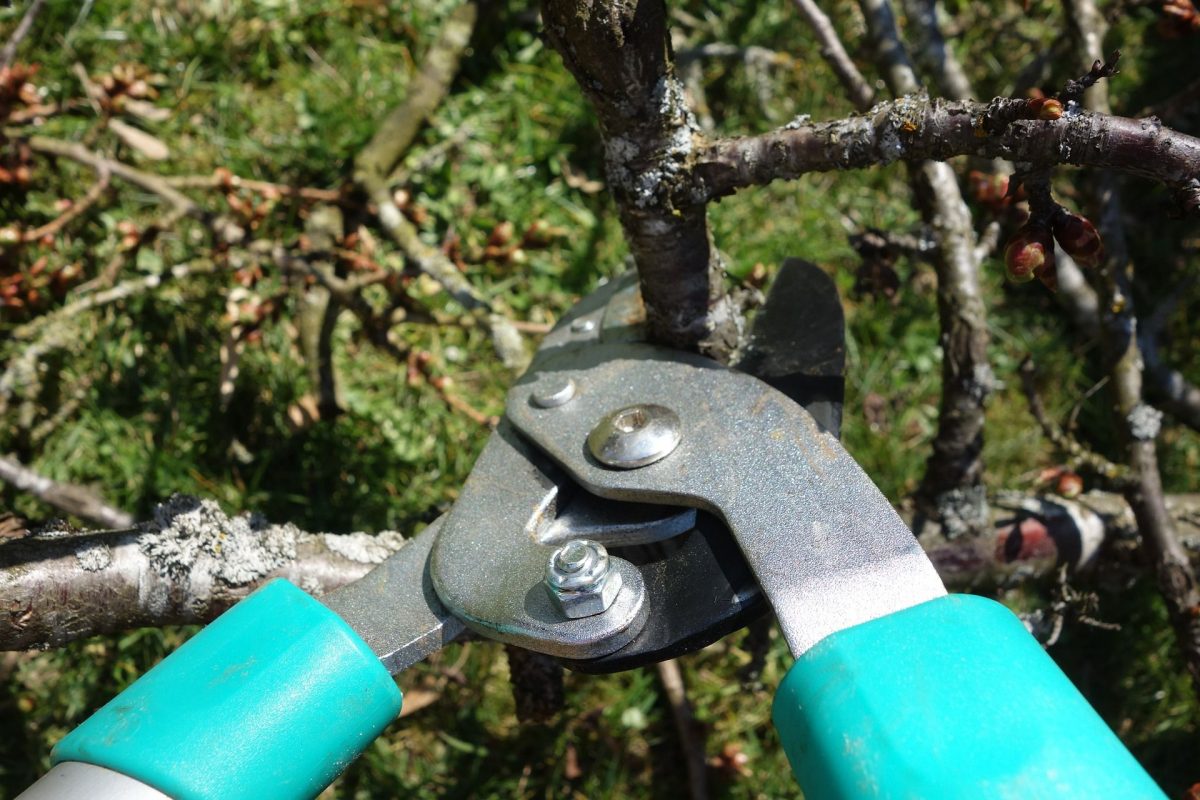Pruning is best described as a horticultural practice involving the selective removal of certain parts of a plant, such as branches, buds, or roots. This may be done for a number of reasons, with the method and timing being of some importance, particularly when flowering and fruiting plants are the subjects – and we wish to achieve a good yield of high-quality produce.
The main principles of pruning
When we prune, there are a few basic objectives to achieve healthy plants, which will then reward us crops for as many years.
Firstly we need to remove growth that is dead. Once plant cells have died, they cannot fight infection, so they are an entry point for diseases to enter. Cankers, Coral spot, and Silver-leaf are all diseases of fruit trees and bushes which could gain entry through dead wood, which should be cut out, back to a suitable place in good, healthy growth.
Growth that has already become diseased also needs to be removed. Plant diseases will spread through the plant and may eventually cause death. Pruning should remove infected wood by cutting back to healthy growth to help prevent its spread both through that plant and also to neighboring fruit trees and bushes.

Fungal diseases, such as Apple and Pear Canker and Coral Spot, can usually be controlled by good pruning, but Bacterial diseases such as Bacterial canker (plums and cherries) and Fireblight will colonize the plant cells far more quickly and will usually necessitate the whole tree being removed to help prevent spread.
Damaged shoots and branches are more prone to infection by diseases, which can then spread. This can include damage to the trunk by rabbits or deer, particularly in the winter, which is why guards are so important when planting. Branches of fruit trees and shrubs may also break when carrying heavy crops, especially in windy conditions. A good, clean cut is far less likely to become infected with a disease than a torn off limb.
Pruning, particularly of fruit, will also aim growth which is generally termed as displaced. Branches or shoots that are ‘in the wrong place’, such as crossing or rubbing, should be removed as these are more prone to damage and infection. Removing these, as well as other congested, surplus, growth, helps airflow and the general health of the plant. Letting more light in will ensure better quality produce and help improve the color of the fruit.
The basic rules of pruning fruit trees and bushes
Here are the basic rules you need to learn for pruning your trees:
Use sharp tools, secateurs, loppers, or saws, depending on the size of wood being cut. Do not overstress your hands or your tools!
Generally, do not remove more than one-quarter of the living growth as this can encourage too much vegetative, nonflowering growth the following year. This could then lead to a biennial bearing…
